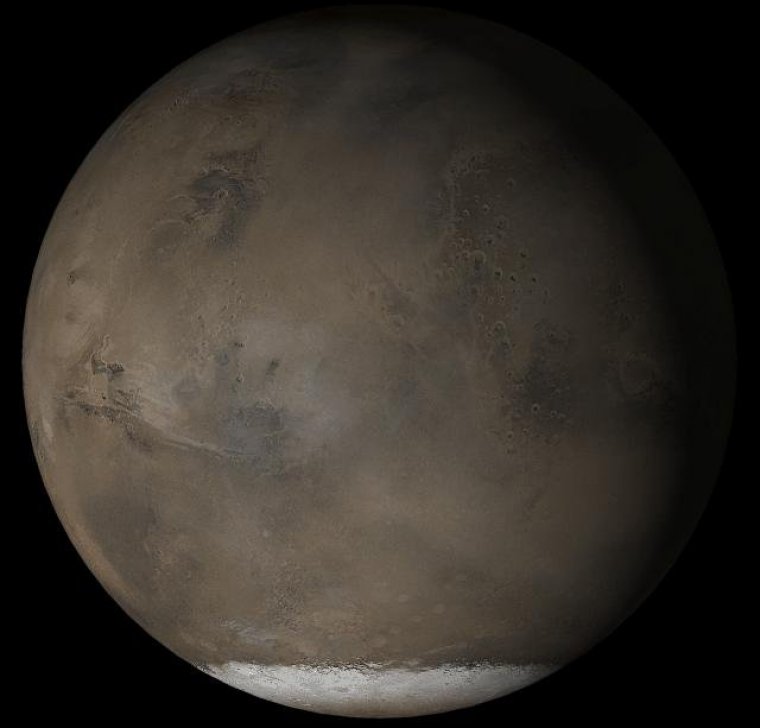| News / Space News |
More Evidence of Salty Lake under Surface of Mars' Southern Ice Cap
New research has found more evidence of a salty lake under the surface of Mars' southern ice cap, and also revealed a number of smaller salty "ponds" nearby -- raising the possibility there may be life on the Red Planet.

Mars' Southern Polar Cap. Photo: NASA
In the new study, Italian scientists used the Mars Advanced Radar for Subsurface and Ionosphere Sounding (MARSIS) instrument on the European Space Agency's Mars Express spacecraft. The radar covered a larger area of the Martian surface and gathered additional data, allowing the scientists to "confirm the liquid nature of the previously observed lake," the research team said in a statement, CNN reported.
The scientists were able to gather more specific details about the lake -- for instance, they estimate it's about 30 by 20 kilometers (18.6 by 12.4 miles) in area.
"The presence of a subglacial lake could have important consequences for astrobiology and the presence of habitable niches on Mars," the statement added.
The study also said the detection of "several other smaller patches of water" was particularly exciting. The ponds -- which the study describes as "patchy water pools or wet areas of smaller extent" -- are different sizes, and separated from the main lake by strips of dry land.
The discovery is significant because it gives us a better idea of the Mars climate, and chemical makeup. For instance, the fact the lake and its surrounding ponds are still liquid suggest they are "hypersaline," the study said -- meaning they contain lots of salts.
This lowers the melting point, preventing the water from freezing despite the cold environment, and may have allowed them to "survive for an extended period of time on a geological scale."
A study last year suggested that 3 to 4 billion years ago, Mars -- now cold and inhospitable -- may have been warm enough to host pouring rainstorms and flowing water, which would have created an environment that could support simple life. As temperatures dropped later on, the water would freeze.
The latest research posits that life on Mars might not just be a thing of the past. "The possibility of extended hypersaline water bodies on Mars is particularly exciting because of the potential for the existence of microbial life," the study said.
If there really is life in these salty waters, it could take different forms. The scientists speculated there could be anaerobes -- tiny organisms that don't need oxygen -- or extremophiles, which can survive in extreme cold or heat.
There could even be aerobes -- organisms that require oxygen. Salty brines like the lakes or ponds hold six times the minimal amount of oxygen needed for microbes to breathe, the study said. (Tasnim News Agency)
YOU MAY ALSO LIKE





